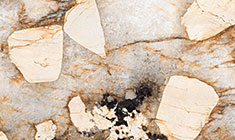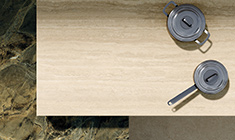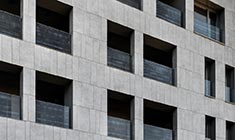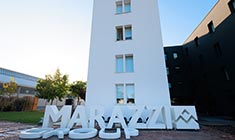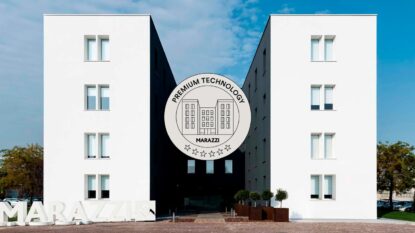The Civic Tower, built between 1676 and 1680, is a distinguishing feature of Piazza Garibaldi and the whole of Sassuolo; its clock has been a reference point for the passage of time in the city for many centuries. The building has undergone a number of restorations over the centuries, but this latest project has given it a whole new splendour.
The history of the ‘Campanone’ is linked to the town of Sassuolo and its inhabitants…
The origin of the square in its current form dates back to the 16th century, when Alessandro Pio initiated its construction by building the Palazzo della Ragione and the Osteria della Posta on its sides. In 1676, Francesco II d’Este commissioned the ducal architect Antonio Loraghi to design the Civic Tower, known locally by the people of Sassuolo as the ‘Campanone’. The construction of the theatre dates back to 1696. It was later restored in 1775 by Francesco III d’Este, who commissioned architect Pietro Bezzi to carry out the comprehensive work that made the square’s appearance more uniform with the porticoes enclosing the space.
The current appearance of the square is essentially unchanged since the 18th century and features original drains, the only ones that remain of an uncovered aqueduct system that once ran through the city centre.
After construction, the Tower was modified by architect Pietro Bezzi, while the addition of the later cupola-lantern was designed by architect Antonio Maria Soli, a leading figure in Modenese Neoclassicism.
The Tower is also present in many of the trademarks of companies in the area; the best known is that of the Roteglia distillery and its Sassolino liqueur, confirming its importance in the city’s image and as a symbol of belonging for many citizens.
What work did you carry out on the building? What were the fragile elements?
The project focused on a conservative restoration of the facades and main elements.
The most significant problem was improper water management, which created faults such as runoff, erosion and surface deposits. We therefore deepened our knowledge of the building through both a documentary and diagnostic survey of its state of preservation in order to get a complete and reliable picture. Work was then carried out by replacing the guttering for water regulation. The surfaces were cleaned manually and mechanically to consolidate the sandstone bases and stone corners beneath the cornices. We paid special attention to the cleaning and protection of the terracotta Madonna and Child, a work by Antonio Pulci from 1792, and the four Carrara marble statues depicting the ages of man – childhood, adolescence, maturity and old age – located next to the belfry in the octagonal tholobate.
Besides securing and consolidation, what other aspects did you work on?
The colour review was very important. The painting work was harmonised with the general layout of the square, as per the specifications of the Superintendency, by means of a series of inspections of the joints, arches and pilasters, with the exception of a few tests carried out in the niche of the Madonna. The colour characteristics have been kept the same on all facades: red background in the frames, cream in the projecting bodies and ochre in the arches of the portico.
The shades were chosen following the mapping of colours in the public space surrounding the Tower.
There has been a long-standing relationship between the Civic Tower and Marazzi. How did you collaborate on this latest project?
The Marazzi Group, in addition to financially supporting the initiative, has always liaised with the Works Management for updates on the progress of works. This interest testifies to the brand’s bond with the local area, its history and its citizens.
In the 1980s, the then “Ceramiche Marazzi” workshop replaced the ceramic dial and overhauled the clock mechanism. In the same period, a kitchen clock in the same colours as the bell tower was given to employees, a gesture that once again illustrates the inseparable and historic relationship between the company and its employees.
We are now working on the possibility of making the tower spaces usable for everyone. Events and exhibitions can be hosted there, which would be the culmination of work that has fully returned the building to the city.















